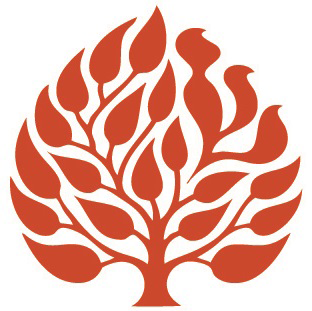The Connection between Twins

By Rabbi Lyle Fishman
While each family relationship in Genesis elicits dorsheini (“investigate, probe, and derive a lesson”), for me the relationship between Esau and Jacob holds especial interest. I am the younger of identical twin brothers. Although the biblical twins were clearly distinguishable by both outward appearance and personality traits, their “twinness” is intriguing. Kevin Snapp summarizes their differences as follows: Esau is the hunter, boldly going into the wilderness; Jacob is “simple” and stays in tents. Esau is their father Isaac’s favorite; their mother Rebecca prefers Jacob. Esau is hairy; Jacob is smooth–skinned. Esau is depicted as frankly masculine, Jacob as somewhat effeminate (“Parashat Va–Yishlah, Jacob and the Gentile Problem,” Conservative Judaism, Volume 55, Fall 2002, 38—55). In Parashat Va–yishlah, it seems that they move closer to each other, burying hostilities in favor of rapprochement.
I imagine that many twins can recount similar stories about the world’s fascination with their similarities and differences. How often during our growing up years did we field the following questions: Who is smarter? Do you finish each other’s sentences? Do you have the same dreams?” In order, the answers to these questions are: We don’t know who is smarter. Sometimes we complete each other’s sentences. Yes, our dreams are similar, especially since our experiences are so similar. One example proves the point.
We were completing our first semesters in colleges situated a thousand miles apart. My brother called me to report on his exams and to ask me about my progress. At the time of his phone call, I was sitting in my dorm room with one wrist badly sprained and the other broken and in a cast, the result of a collision with an unforgiving gym wall. He asked me how I was and I answered simply, “Fine.” We spoke for a few minutes without my revealing anything about my injuries. I felt that I could not worry him during that stressful time. Immediately after we concluded our conversation, my brother called our parents asking, “What’s wrong with Lyle? I detected something in his voice.” My best attempts at concealing the truth were no match for “twin telepathy.” This incident is more remarkable because my brother is profoundly hearing impaired.
Parashat Va–yishlah presents the reconciliation of these biblical twins. They have been apart for twenty–one years, since Jacob’s supplanted Esau and received Isaac’s blessing. Jacob hears God’s call to return to his homeland knowing that he will have to approach Esau and make peace with him. Jacob’s messengers approach Esau with the message of his return. They come back to Jacob with news that frightens Jacob terribly. His brother Esau, who feels cheated of his blessing, is coming toward Jacob accompanied by four hundred men. In response, Jacob prays and sends substantial gifts to assuage his brother’s anticipated animosity. Later, after his decisive wrestling match with a mysterious stranger, Jacob bows before his brother seven times. We identify the tribute and the bowing as Jacob’s attempt to appease Esau. However, if we recall the blessings of Isaac to Jacob–Esau in Genesis 27:28—29, we can discern in Jacob’s actions an attempt to redress the wrong by returning the blessing he “stole” from Esau.
Moreover, we can interpret Jacob’s nighttime encounter as his confrontation with his brother Esau, or as Snapp phrases it “an inner Esau (ibid., 42). We note, as did others before us, that the leitmotif of this section is the word panim. At Penuel/Peniel, “Jacob realizes that in seeing the other’s face, he sees his own. By integrating his self–image and the shadow image of the other, Jacob sees the other’s face and recognizes the image of God in both.”
For this meeting to be a true reconciliation, we need to identify some movement toward Jacob on the part of Esau. Genesis 33:4 provides just such movement: “Esau ran to greet him. He embraced him and, falling on his neck, he kissed him; and they wept.” While the word vayishakeihu is accompanied by dots, and often these dots are a mark on doubtful words, Professor Saul Lieberman, zikhrono livrakha, treaches us in “Critical Marks in the Hebrew Bible” (Hellenism in Jewish Palestine, 45ff) that this is one case where the dots do not indicate a doubtful reading, “but [serve] as a mark of an unusual allusion in the passage.” R. Simeon b. Yochai asserts that Esau kisses Jacob sincerely. In his words: “As a rule it is known that Esau hates Jacob but this time his love for his brother was stirred, and he kissed him sincerely” (Sifrei Numbers Piska 69 and parallels). The kiss “appropriately signals the final resolution of the chain of tragic events precipitated by… Jacob’s deceitful kiss that played a crucial role in the original blessing (Genesis 27:26)” (Nahum Sarna, JPS Genesis, 229).
The tears that both brothers shed bespeak their genuine feelings. They were moved. Jacob, the younger twin, weeps as a release from the tension and anxiety he carried for over two decades (ibid.). Esau’s tears draw him closer to qualities in his grandfather Abraham.
Twins will rightly assert their differences in carving out their individual personalities. This parashah sees them come closer together, hearing the other’s voice and seeing the other’s face.
The publication and distribution of the JTS commentary on Parashat Va–yishlah are made possible by a generous gift from Rita Dee and Harold (z”l) Hassenfeld.



